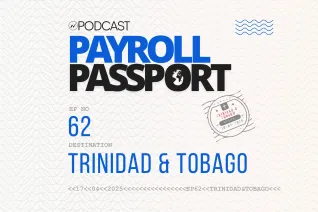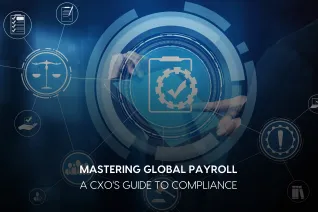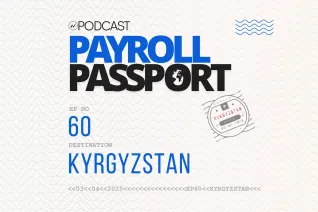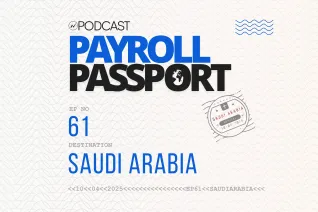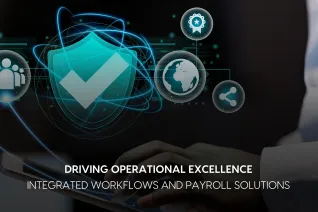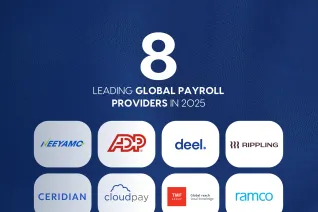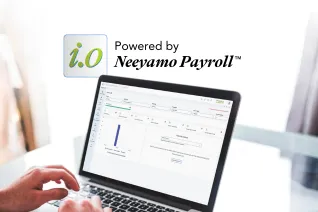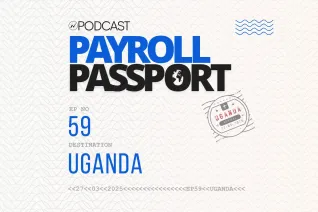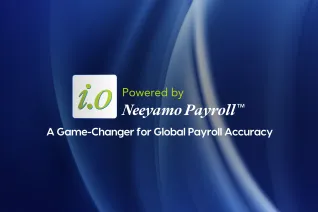Country Spotlight: Payroll in Singapore

Did you know that only security guards and cleaners are covered under Singapore’s minimum wage laws?
Yes.
Unlike other countries whose minimum wage applies to all employees across all industries, the minimum wage in Singapore pertains to just two groups of employees.
Cleaning staff are paid a monthly minimum of $1,000, and security officers are paid a monthly minimum of $1,100.
These are far from the only thing that sets Singapore apart regarding payroll processing. The country’s payroll is heavily influenced by the two groups into which an employee’s earnings fall.
Ordinary Wages: Regular monthly income is referred to as ordinary earnings. They are often paid to employees for their work during the month.
Additional Wages: Additional wages refer to one-time compensations such as bonuses and leave pay. Typically, they serve as bonuses on top of regular income.
Classifying earnings into ordinary and additional wages is essential because each classification has its ceiling limits, i.e., the maximum amount on which Central Provident Fund (CPF) can be calculated. Presently, the ordinary wages that qualify for CPF is $6,000 per month, and that for additional wages is $1,02,000 – total ordinary wages that attract CPF each year.
Payroll processing in Singapore involves plenty of different taxation methods, making it a tricky proposition for employers. Here are the four key differentiators:
1. Annual Tax System:
Unlike the monthly income tax levied in most countries worldwide, individual tax in Singapore is levied and charged annually. Singapore’s income tax is progressive; higher income corresponds to higher taxation. The tax rates currently fall between 0% and 22%, and the highest bracket will increase to 24% in 2024. However, employees are required to make a monthly CPF contribution.
2.SHG Contributions
Singapore is a multi-racial country with many Self-Help Groups (SHGs) that aim to protect the interests of minorities.
A part of the Central Provident Fund contributions made by the employees goes to the SHGs in the nation, and one might not even be aware of this until they scan their payslip. These groups aim to aid the minorities in the Eurasian, Indian, Chinese, and Muslim communities.
Here are four major SHG funds found in Singapore:
CDAC – Chinese Development-Assistance Council Fund
ECF – Eurasian Community Fund
MBMF – Mosque Building & Mendaki Fund
SINDA – Singapore-Indian Development-Association Fund
Employees who voluntarily contribute to any of these SHGs get a tax exemption at the end of the year.

3.Singaporeans and NRIs contributions
The employees in Singapore are classified under two NRIC (National Registration Identity Card) types to calculate CPF contributions:
NRIC Pink: Singapore nationals with pink ID cards must make total CPF contributions.
NRIC Blue: Employees with a permanent resident card are issued a blue ID card, and they have three different contribution percentages based on the card application dates.
CPF, therefore, depends on age and the NRIC type of the respective employee.
4.IR21 Tax Clearance
When an employee is no longer associated with a company, the employer is responsible for withholding the employee’s salary for tax clearance. Once the tax payments are cleared, a tax clearance certificate is issued, after which the employee’s salary is released, and the final settlements are made.
All of these calculations make processing payroll in Singapore unique. As a result, many companies in Singapore have started outsourcing their payroll. Especially with global expansion-led workforce fragmentation and the heavy penalties for non-compliance, companies have begun relying on experts to handle their payroll.
ALSO READ | Country Spotlight – Payroll in the Philippines
Do you have your workforce in Singapore? Are you interested in knowing more about payroll in Singapore? Are you interested in establishing a workforce in Singapore and want to learn more about the intricacies of processing payroll in the country? Reach out to us and let our experts help you.
Latest Resources
Stay informed with latest updates
If you're curious and have a thirst for knowledge pertaining to the HR, payroll, and EOR universe, don't miss out on subscribing to our resources.




